Many people use chainsaws to cut down trees, remove tree stumps and branches. It’s important that you know how to properly maintain your chainsaw so it will last for many years.
Chainsaw maintenance is also required when the chain is tangled up or if the chain becomes too loose on the sprocket teeth. This blog post includes instructions for untangling a chainsaw chain in case it becomes necessary.
Table of Contents
Things You Need To Prepare:
1) A sturdy table
It is advised that you use a sturdy wooden table, workstation, or any other table that you are not using.
Like the chain, in general, causes harm or at the very least induces modest scrapes on the table, experts recommend using either an old table or a strong and long-lasting table. On the ground is also possible; however, make careful to avoid pricey mats or tiles.
2) Chainsaw gloves
Experts strongly recommend you to wear chainsaw gloves while working on the chain, which is quite durable and tough enough to prevent your hands from being harmed.
If you don’t have special chainsaw gloves, make sure you get sturdy and robust work or leather gloves. Gloves are the ideal choice for keeping your hand safe from deep cuts.
3) Tools
A chainsaw is a dangerous tool that needs to be handled with care. Keep a toolbox on hand while untangling your chainsaw to reduce the risk of injury. If the chain has gotten caught in the chainsaw blade and won’t come out, you’ll need specific tools to get it out.
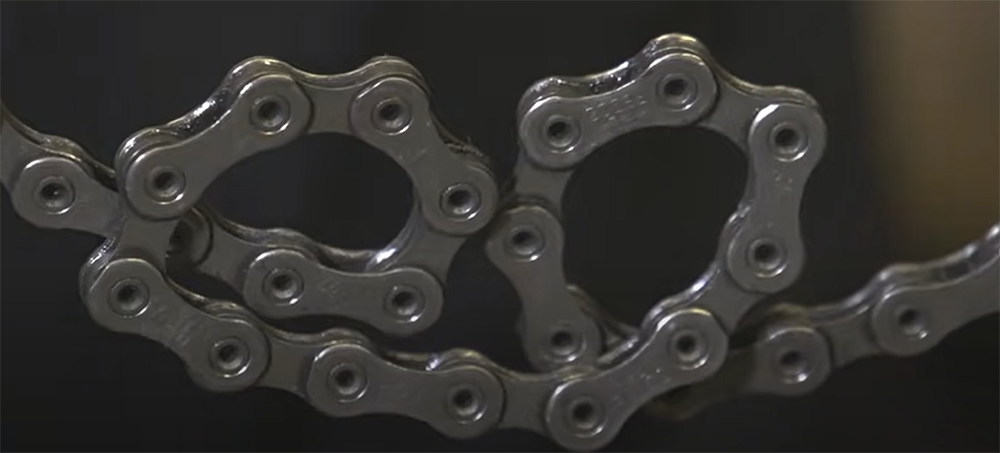
To remove the chain, you’ll need a screwdriver or an Allen wrench. These tools will aid in the removal of the chainsaw board and guide bar. It is, however, dependent on the type and model of the chainsaw.
4) Lubricating oil
The lubricating oil can be fantastic for cleaning and lubricating the chainsaw’s rusted and filthy chain. Untangling old chains is difficult because they’re full of stubborn rust and grease, as well as grime on their surface.
However, if you use lubricating or engine oil (as an alternative to lubricating oil) instead of lubricant, each chain’s connection will be smoother.
5) Protective goggles
When untying the chain, especially one that is old and rusty with dirt and irritants, wear eye protection. There’s no way around it: wearing a protective goggle is the only safe option for your eyes.
After you’ve put on your safety gear and untangled your tangled chain, it’s time to get some equipment.
How To Untangle a Chainsaw Chain:
1. Get ready
Place the saw on a stable table or workbench. Before you attempt to work on the chain, put on chainsaw gloves and eye protection. If the chain has already been taken out of the guide bar, you’ll need to use specific tools to remove the housing, bar, and chain quickly.
2. Find two opposite loops
You’ll need to find the two most distinct loops in the chain. Using only these two points, hang down the chain with each of your hands and let it dangle. This might assist in unknotting the chain or at least reduce the tangle’s complexity.
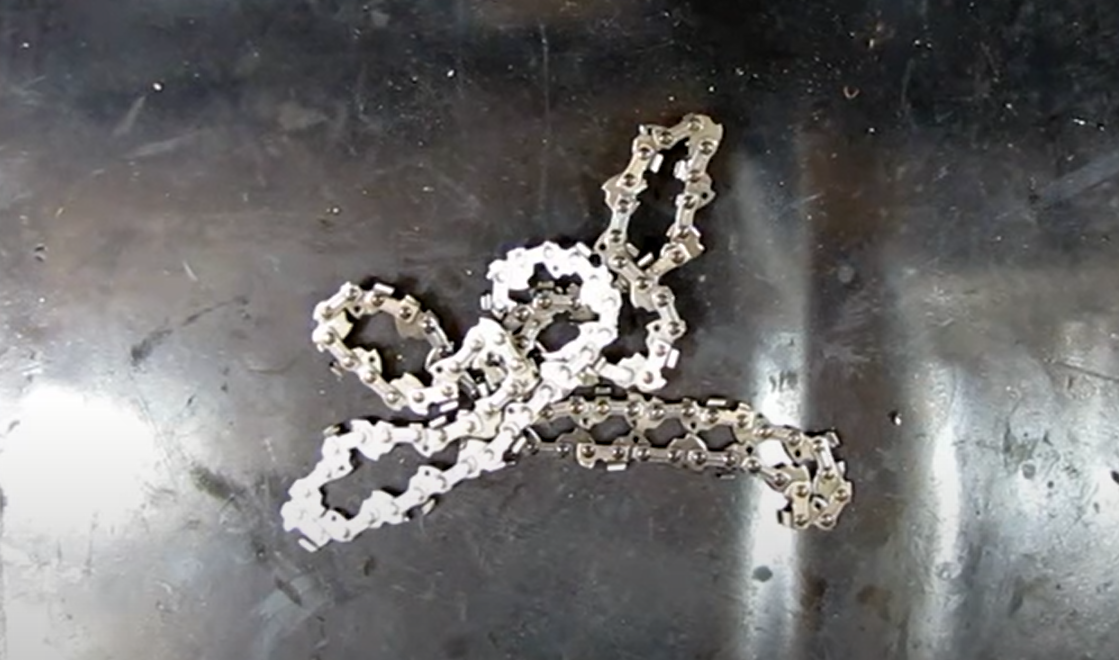
3. Make the loops bigger
You’ll need to find a way to make the tangle’s loops bigger until you’re able to create just one loop. Make sure your hands are still on the two most remote loops. Use the chain’s slack to expand the remaining loops as much as possible.
4. Untangle the chain
Locate the chain’s lowest point with your hands in place. Guide and allow it to shoot straight up in a vertical position, as shown. Chainsaw chains are quite sturdy, and you may easily elevate this portion so that the loops in your hands are now below the raised area using the appropriate technique.
5. Spread them apart
If the preceding methods don’t work for you, consider untangling the chain by focusing on one of the loops or tangles. You must separate each one of them as far away from each other as possible in order to make the tangle simpler until all of the loops have vanished.
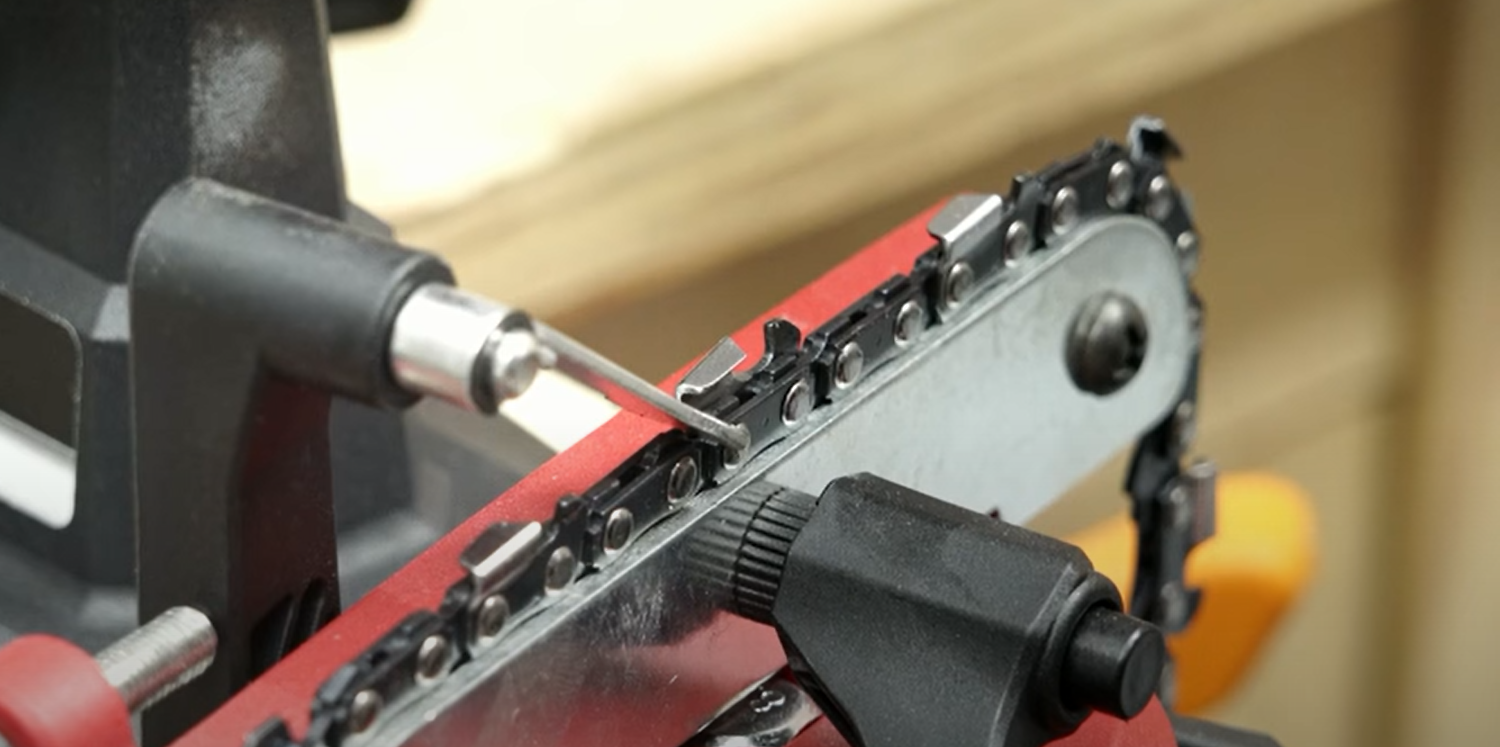
Tips for the Users:
- Keep safety goggles and a pair of gloves on hand to make the job go more smoothly and without incident. Any oil or wood chips will be kept away from your eyes with glasses. Gloves will also keep your hands safe from sharp links. Take care not to spin or turn chains since this may harm the teeth;
- If you’re working with a new chain, it should be well-oiled and relatively clean, making untangling easy. If you’re dealing with an old chain, however, some lubricating oil may be required. Clean off any mud or grime while you’re at it – untying will be quick and simple;
- When any old chains have been removed, you may need to sharpen the saw’s teeth in order to make it useable for further operations;
Comparison of Techniques to Untangle a Chainsaw Chain
This table compares various techniques that can be used to untangle a chainsaw chain. The techniques are compared based on their effectiveness, ease of use, and time required to complete the task.
| Technique | Effectiveness | Ease of Use | Time Required |
|---|---|---|---|
| Using a screwdriver | Low | Difficult | 20-30 minutes |
| Using pliers | Moderate | Moderate | 15-20 minutes |
| Using a chainsaw bar | High | Easy | 5-10 minutes |
| Using a chainsaw chain breaker | Very High | Easy | 5-10 minutes |
This table shows that using a chainsaw chain breaker is the most effective and easiest technique for untangling a chainsaw chain, while using a screwdriver is the least effective and most difficult technique. Using pliers falls somewhere in between, while using a chainsaw bar is the second most effective technique but still requires more time and effort than using a chainsaw chain breaker. The time required for each technique varies, with using a chainsaw chain breaker and a chainsaw bar being the fastest techniques, while using a screwdriver takes the longest.
FAQ
How do you straighten a bent chainsaw chain?
If the chain has become bent due to an accident, it may be necessary to straighten it out. You can do this by placing one of the links next to a wall and hitting only that link with a hammer until it returns to its original position.
How long does chainsaw oil last?
While most chainsaws require little maintenance aside from keeping them clean and lubricated, you’ll need some oil on hand for your saw at all times. Chainsaw oil is best kept in dark containers so as not to degrade or break down over time. These oils should also remain cool (about 50 degrees Fahrenheit) since high heat will cause them to turn rancid quickly. Oil usually lasts about six months before turning bad if properly stored away from heat and light.
How do you sharpen a chainsaw?
Although most modern saws are self-sharpening, some will require manual sharpening to achieve the same effect. Follow your manufacturer’s guidelines on how often these should be done for optimal results; however, it is usually necessary to perform this task once per year since even the best automatic systems cannot keep up with constant use over time.
What do you soak a chainsaw’s chain in?
In a plastic bucket, combine 1 cup of household ammonia and 1 gallon of water. Soak the chain in this solution as you carefully clean one section at a time using a soft-bristled brush. Continue soaking and scrubbing until the chain shines and appears to be free of dirt [1].
What causes a chain to come off a chainsaw?
A chain may come off a chainsaw for any number of reasons:
- First, the tensioning mechanism which keeps it in place must be checked to ensure that it is working correctly;
- Additionally, there are typically 2 bolts on each side of the saw’s motor housing where blade attachments can be screwed into place. These also hold down and guide the chain as well. If they become loose or fall out entirely, this will cause problems with keeping your chain securely fastened at all times so you’ll want to replace them regularly if needed;
Is it possible to put a chainsaw chain backward?
Unfortunately, the chain will continue to move forward regardless of which way you put it on. However, if you reverse the chain and make a saw, it will not cut. When using a chainsaw, keep in mind that the cutting portion of the blade should be facing away from you and traveling from the rear of the machine to the front tip [2].
How do you untangle a thick chain?
A thick chain will likely be able to stand up on its own so you’ll want to place it flat against a wall. You can then grab the opposite side of each link and bend them until they form an “S” shape. Make sure that all links are pointing away from you, not at your face or body. Once this is done, turn the pawl (the mechanism which allows for saws to move forward) towards your right hand;
If this does not work after several tries, remove two adjacent chains using wire cutters before attempting again with fresh oil lubricating any new sections where old ones were.
If you are working with a very thick chain, or if your chainsaw is having difficulty cutting through the wood in question, it may be best to attach two separate chains together. This should give you enough power and speed to get past even the most stubbornly dense pieces of lumber.
How do you fix a stiff chainsaw chain?
The Liquid Wrench [3] may be sprayed on the stiff link and allowed to sit for a minute before being seized with two pairs of pliers. If that doesn’t work, replace the link. Examine the rest of the loop’s links [4].
Can a seized chainsaw be fixed?
It’s unlikely that a seized saw is repairable. Damage to the main crank bearing is one sign that it’s time to retire the saw.
How do you unstick the piston rings on a chainsaw?
It may be possible to free the piston rings by removing the spark plug and allowing any excess gasoline inside of it to drain out. Once this process is finished, you can try pulling back on the starter cord with some pliers while simultaneously pushing down upon the throttle trigger for several seconds before replacing one or both parts.
If that does not work, check your engine’s owner’s manual for instructions detailing how to remove its headcover so that you can inspect what happened more closely. If necessary, carefully pry apart each individual piece until they are loose enough for disassembly.
How do you unscrew a stuck chainsaw?
A stuck chainsaw can sometimes be loosened with a hammer and chisel placed at the site of the immobile screw. Once you have removed it, apply some fresh chain lubricant before reattaching it to your machine!
Can you ruin a chainsaw chain?
Chains are designed for different purposes so not all types of them can be ruined. The best way to tell if your chain is ruined is by checking with the manufacturer or distributor of your equipment. For example, they may wear more quickly than usual which means they will need replacing more often than they normally would. When running at higher speeds, the chains are more likely to be ruined by prolonged friction and heat.
The teeth on a chain can also wear down which means you will need to replace them so they do not damage your saw. If you notice that your chain is hitting another part of the equipment, it needs replacing as soon as possible to avoid excessive wear and tear and costly maintenance procedures.
Generally speaking, if your chainsaw runs fine but does not cut as well as before then it could be because of a dulled chain, which also needs replacing.
Reputable companies such as Stihl, known for their high-quality chainsaws, recommend having your saw serviced regularly, this should include checking or changing the oil and cleaning out any residual debris from the previous usage. This should be done after every 50 hours worked, even if you are not noticing any problems with the machine. This will help to prevent any serious damage from occurring in the long term.
The cost of replacing your chain depends on the type and size of equipment that you own. Also, all types of chains will need to be replaced at different intervals which again varies depending on the use they have received. If you feel that your saw is becoming harder to operate then it may be time to replace it with a new set of blades.
As well as decreasing its power output it can also produce dust when there is friction between itself and the material used for cutting. While this doesn’t mean your chainsaw needs replacing, it could affect performance leaving you wishing the saw was in better condition.
However, if your chainsaw is overheating or not cutting efficiently it may be worth having it serviced to see if there are any issues with the engine before simply replacing the chainsaw parts. It’s important that you heed these warnings about servicing before giving in to pressure to purchase a new product since it is very likely that most of the problems can be easily fixed instead of opting for an expensive replacement.
How to untangle a pole saw chain?
Untangling a pole saw chain can be a daunting task, but it is possible with the right tools and techniques.
First, you will need to gather the necessary tools for the job. This includes a pair of pliers, a flathead screwdriver, and a wrench. Once you have these items assembled, start by removing any debris or dirt from the chain so that it is easier to work with. Next, use your pliers to gently pull apart any knots or tangles in the chain. If there are any tight spots that are difficult to loosen, try using your screwdriver as leverage to help separate them.
Finally, once all of the knots have been removed, use your wrench to ensure that all of the links in the chain are properly secured and tightened. This will help ensure that your pole saw chain remains tangle-free while you’re using it. With these steps completed, your pole saw should be ready for use again!
How do you remove slack from a chainsaw chain?
Removing slack from a chainsaw chain is an important step in maintaining the saw. To do this, you will need to loosen the bar nuts that hold the bar and chain in place. Then, turn the tension adjuster located near the front of the saw until it is tight enough that there is no slack in the chain. Finally, retighten the bar nuts to keep the chain secure.
It’s important to check your chainsaw’s manual for specific instructions on how to properly adjust your tensioner. This will ensure that you are using the correct settings for your particular saw model. Additionally, make sure to wear protective gloves and eye protection while adjusting a chainsaw chain as this can be a dangerous task if done incorrectly.
By taking proper care of your chainsaw and removing slack from the chain regularly, you can help extend its life and keep it running safely and efficiently.
Do chainsaw chains get stretched out?
Yes, chainsaw chains can get stretched out over time. This is due to the tension placed on the chain when it is in use. The tension causes the chain to stretch slightly and this can lead to a decrease in performance. To prevent stretching, it is important to keep the tension on the chain correctly adjusted according to the manufacturer’s instructions. Additionally, regularly checking and replacing worn or damaged parts of the chain will help to ensure that it remains in good condition and performs at its best.
Should chainsaw chain be loose or tight?
The tension on a chainsaw chain should be adjusted to ensure the safety of the user and the optimal performance of the saw. When the chain is too loose, it can cause kickback, which can be dangerous for the operator. On the other hand, when a chain is too tight, it will increase friction and cause unnecessary wear on the drive sprocket and bar.
To properly adjust your chainsaw chain tension, start by loosening the bar nuts and moving the bar away from the engine. Then, rotate the adjusting screw until you feel some resistance when pulling on the chain at its midpoint. If you can still pull more than 1/4 inch of slack in either direction, then you need to tighten your chain further. Finally, retighten both bar nuts to secure your adjustment.
Useful Video: The Best Method to Untangle a Chainsaw Chain
References:
- https://homesteady.com/13403098/how-to-clean-a-chainsaw-chain
- https://strydomwebdevelopment.co.za/direction-of-chain-on-chainsaw-how-to
- https://www.liquidwrench.com
- https://opeforum.com/threads/how-to-fix-stiff-chain.17339/

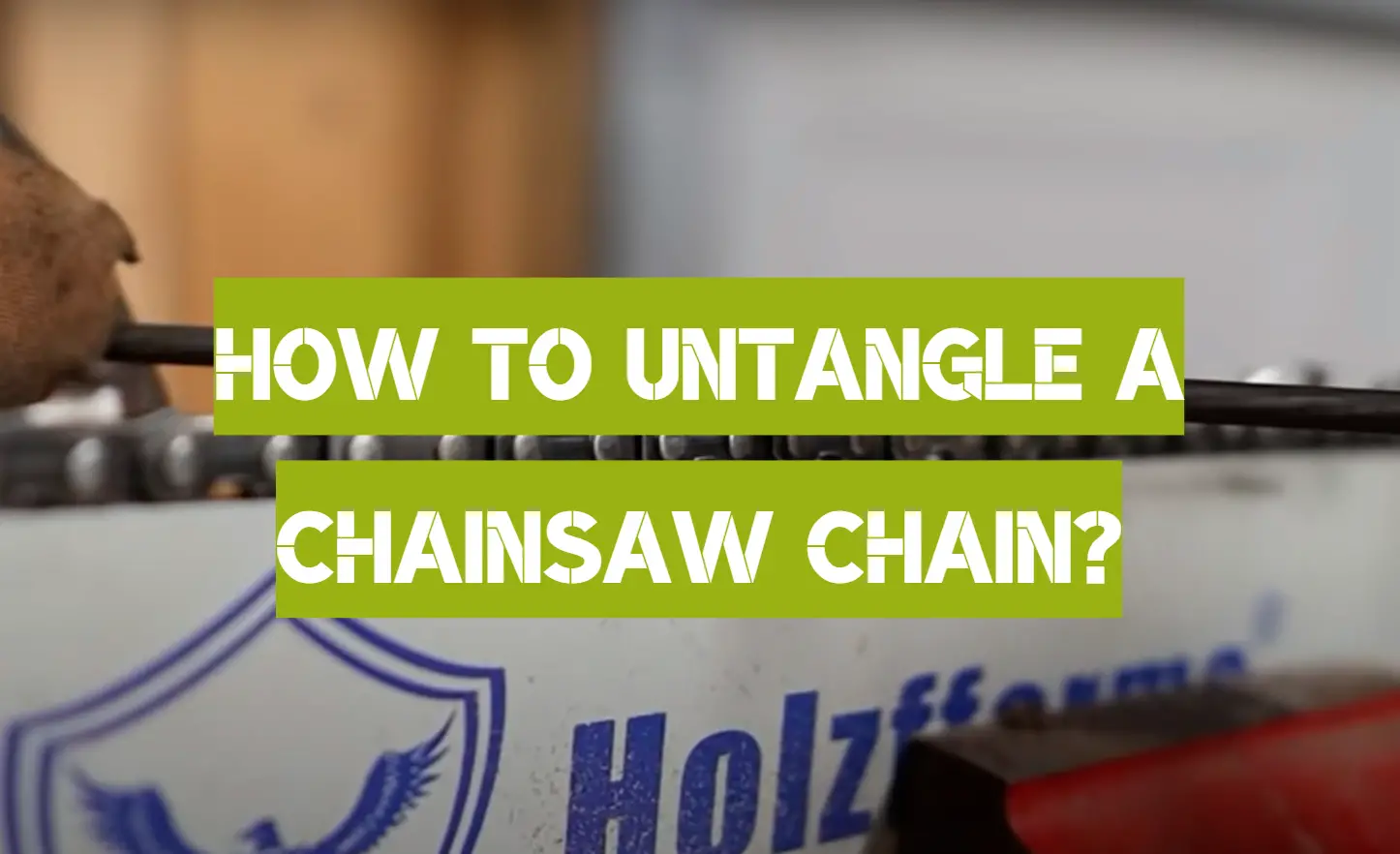

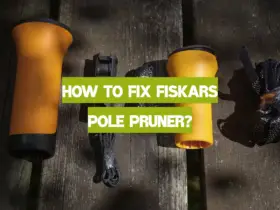
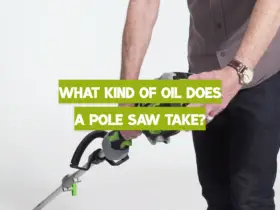
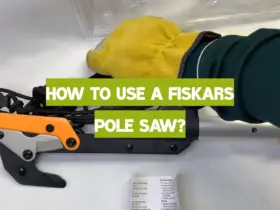

Leave a Reply